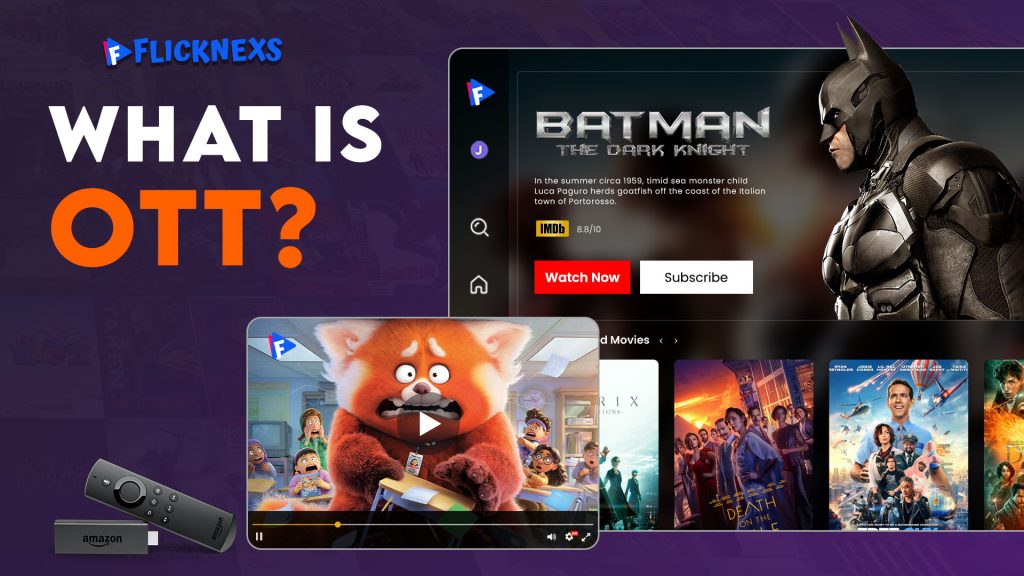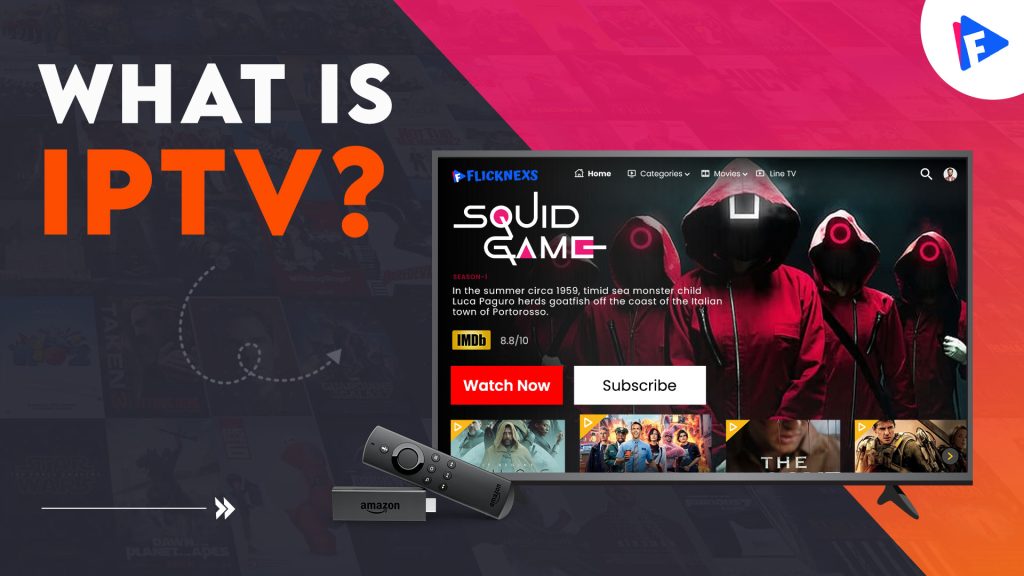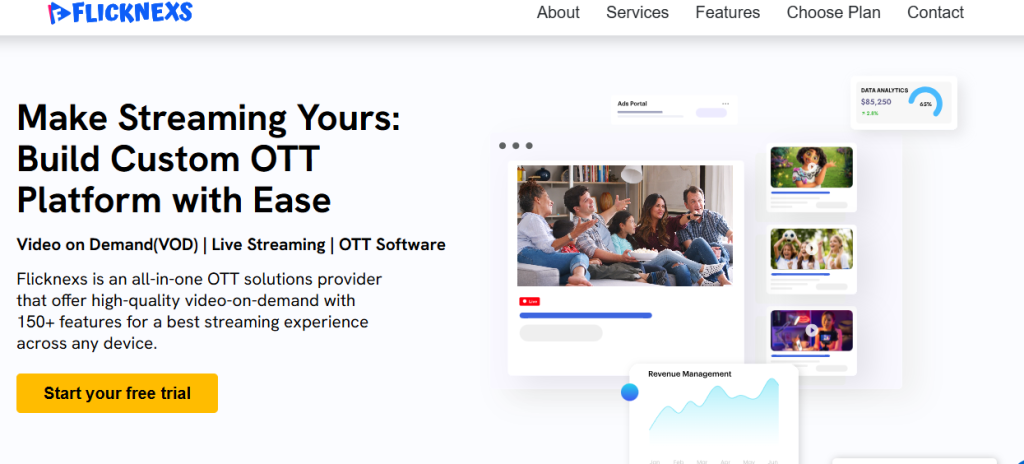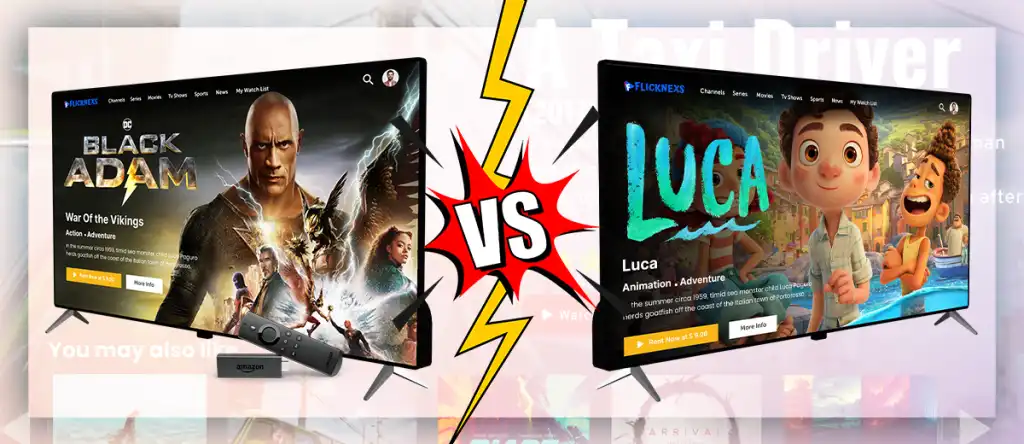Explore about OTT VS IPTV lets go. IPTV delivers television content by using signals based on the Internet protocol, the unmanaged Internet with the “last-mile” telecom company acting only as the Internet service provider.
As described above, “Internet television” is “over-the-top technology“. Both IPTV and OTT use the Internet protocol over a packet-switched network to transmit data, but IPTV operates in a closed system dedicated, managed network controlled by the local cable, satellite, telephone, or fibber-optic company.
The OTT video services use the publicly accessible Internet to deliver video streams. Such content is not just available via set-top-boxes, but also via any devices that can access the Internet such as phones, tablets and smart TVs with a broadband connection.
What Is OTT?

OTT stands for Over the Top Video streaming. It can be applied by anyone over the internet connection.
Some OTT content can be produced by an open ecosystem. Its monthly cost is relatively low as compared to several internet networks.
This term is used to define the content provider that allocates streaming media directly to viewers over the web, bypassing multiple platforms like telecommunication, broadcast television, multichannel that facilitate as a controller or distributor of such content.
How Does OTT Work?
- OTT is offered by various content providers, which can include streaming platforms, broadcasters, and even individual content creators.
- These providers acquire or create a library of content, which can include movies, TV shows, documentaries, live events, and more.
- The content is encoded into digital formats suitable for internet transmission. This includes compressing and formatting the video and audio data.
- The encoded content is stored on servers in data centres or cloud infrastructure. These servers are equipped to handle large volumes of data and user requests.
- Users access OTT content through a wide range of devices, such as smartphones, tablets, smart TVs, desktop computers, and dedicated streaming devices (e.g., Roku, Apple TV, Amazon Fire TV).
- A stable and sufficiently fast internet connection is crucial for streaming OTT content. The speed required depends on the quality of the content being streamed (e.g., SD, HD, 4K).
- When a user selects a title to watch, the content is streamed over the internet in real-time. The content is broken down into small data packets and sent to the user’s device.
- OTT platforms often provide personalized recommendations based on user preferences and viewing history to help users discover new content.
What Is IPTV?

IPTV stands for Internet Protocol television. It is the process of communicating and broadcasting television programs through the web using Internet Protocol.
IPTV provides dynamic features to the user to execute the user experience compared to a traditional television transmission including radio frequency broadcast, satellite broadcast, and cable television.
A broadband connection is used as the channel of transmission for IPTV, which is very adequate compared to previous transmission modes.
How Does IPTV Work?
- IPTV can receive content from various sources, including live TV broadcasts, video-on-demand libraries, and interactive applications.
- Before transmission, the content is encoded into digital format, typically using compression techniques like H.264 or H.265 (HEVC). This compression reduces the size of the video and makes it suitable for efficient transmission over the Internet.
- The encoded content is stored on content servers. These servers can be owned and operated by IPTV service providers or third-party content delivery networks.
- Middleware is the software that manages the user interface, content access, and other interactive features. It’s responsible for handling user requests, channel navigation, and providing program guides.
- To access IPTV, users need a compatible device such as a set-top box, smart TV, computer, tablet, or smartphone. This device connects to the Internet and has IPTV software or apps installed.
- When a user selects a channel or on-demand content, the IPTV system retrieves the requested data from the content server. The content is then sent to the user’s device in real-time or buffered for later playback.
- To protect copyrighted content, IPTV systems may incorporate digital rights management and encryption mechanisms to prevent unauthorized access and distribution.
Pros and Cons of OTT and IPTV
Pros of OTT
- OTT platforms offer a vast library of movies, TV shows, documentaries, and original content, catering to diverse tastes.
- Viewers can watch content at their convenience, pausing, rewinding, or fast-forwarding as desired.
- OTT services are accessible on smartphones, tablets, smart TVs, laptops, and more, providing flexibility in viewing.
- Many OTT platforms offer ad-free or minimal ad viewing experiences compared to traditional television.
- OTT platforms invest in creating their own exclusive content, often of high quality, attracting top talent.
Cons of OTT
- The cost of subscribing to multiple OTT platforms can add up, potentially exceeding the cost of traditional cable or satellite TV.
- Streaming relies on a stable internet connection; slow or unreliable internet can result in buffering issues.
- With numerous OTT platforms, finding specific content may require multiple subscriptions, leading to content fragmentation.
- Live sports, news, and events may be limited on OTT platforms compared to traditional TV.
Pros of IPTV
- IPTV offers a vast array of channels and content from around the world, including live TV, on-demand movies, TV series, and more.
- Many IPTV providers allow you to choose custom channel packages, giving you greater control over what you pay for.
- IPTV services often provide access to a library of on-demand content, allowing you to watch shows and movies at your convenience. You can pause, rewind, or fast forward through content as well.
- IPTV can be accessed on various devices, including smartphones, tablets, smart TVs, and computers, making it highly flexible and accessible.
- When you have a reliable internet connection, IPTV can deliver high-quality, high-definition (HD) content, sometimes even 4K, with minimal buffering or lag.
Cons of IPTV
- The quality of your IPTV experience heavily relies on the stability and speed of your internet connection. Slow or unreliable internet can lead to buffering and interruptions.
- IPTV services might not have the same content lineup as traditional cable or satellite providers, especially when it comes to niche or regional channels.
- Some IPTV services may offer pirated or unauthorised content, raising legal and ethical issues. Using such services can lead to legal consequences.
- IPTV systems can be prone to technical glitches, software bugs, or downtime, which can disrupt your viewing experience.
OTT VS IPTV – What’s Different?
| Feature | OTT | IPTV |
| Definition | OTT is the delivery of video content over the internet directly to users, bypassing traditional cable or satellite providers. | IPTV refers to the delivery of television programming using internet protocol (IP) networks. |
| Content | OTT services offer a wide range of content, including movies, TV shows, and live sports, which users can access on-demand. | IPTV services offer traditional TV channels and live broadcasts, along with on-demand content. |
| Delivery | OTT content is delivered over the open internet and can be accessed on any device with an internet connection, including smartphones, tablets, and smart TVs. | IPTV content is delivered over private networks and is typically accessed through a set-top box or a dedicated IPTV app on a device. |
| Quality | OTT content is typically delivered in lower quality than IPTV due to the open nature of the internet, which can result in buffering or pixilation. | IPTV content is delivered in high quality and is less likely to experience buffering or pixilation due to the dedicated network infrastructure. |
| Cost | OTT services are generally less expensive than IPTV, and users typically pay a monthly subscription fee for access to the content. | IPTV services can be more expensive than OTT due to the infrastructure required to deliver high-quality content and the need for a set-top box or dedicated app. |
| Accessibility | OTT services are available worldwide, and users can access content from any location with an internet connection. | IPTV services are typically region-specific, and the availability of content can vary based on the user’s location. |
| User Experience | OTT services offer a personalized and flexible viewing experience, allowing users to watch content on-demand and on their preferred devices. | IPTV services offer a more traditional TV viewing experience, with live channels and scheduled broadcasts. |
How Flicknexs Help’s in OTT VS IPTV

Flicknexs enhances OTT (Over-The-Top) and IPTV (Internet Protocol Television) services by providing a comprehensive platform for content management, delivery, and monetization.
It streamlines content distribution, offers customizable player options, and enables monetization strategies like ads and subscriptions, improving the overall user experience and revenue generation for OTT VS IPTV providers.
Conclusion
OTT vs IPTV are two different methods of delivering TV content over the internet. IPTV uses a dedicated network to deliver content, while OTT services use the public internet.
Both have their own advantages and dis-advantages, and the choice between them depends on various factors such as content type, quality of service, cost, device compatibility, and customer support.
Understanding the differences between OTT vs IPTV is crucial for anyone looking to access TV content over the internet. Users can make an informed choice and enjoy a high-quality viewing experience.



Leave a Reply